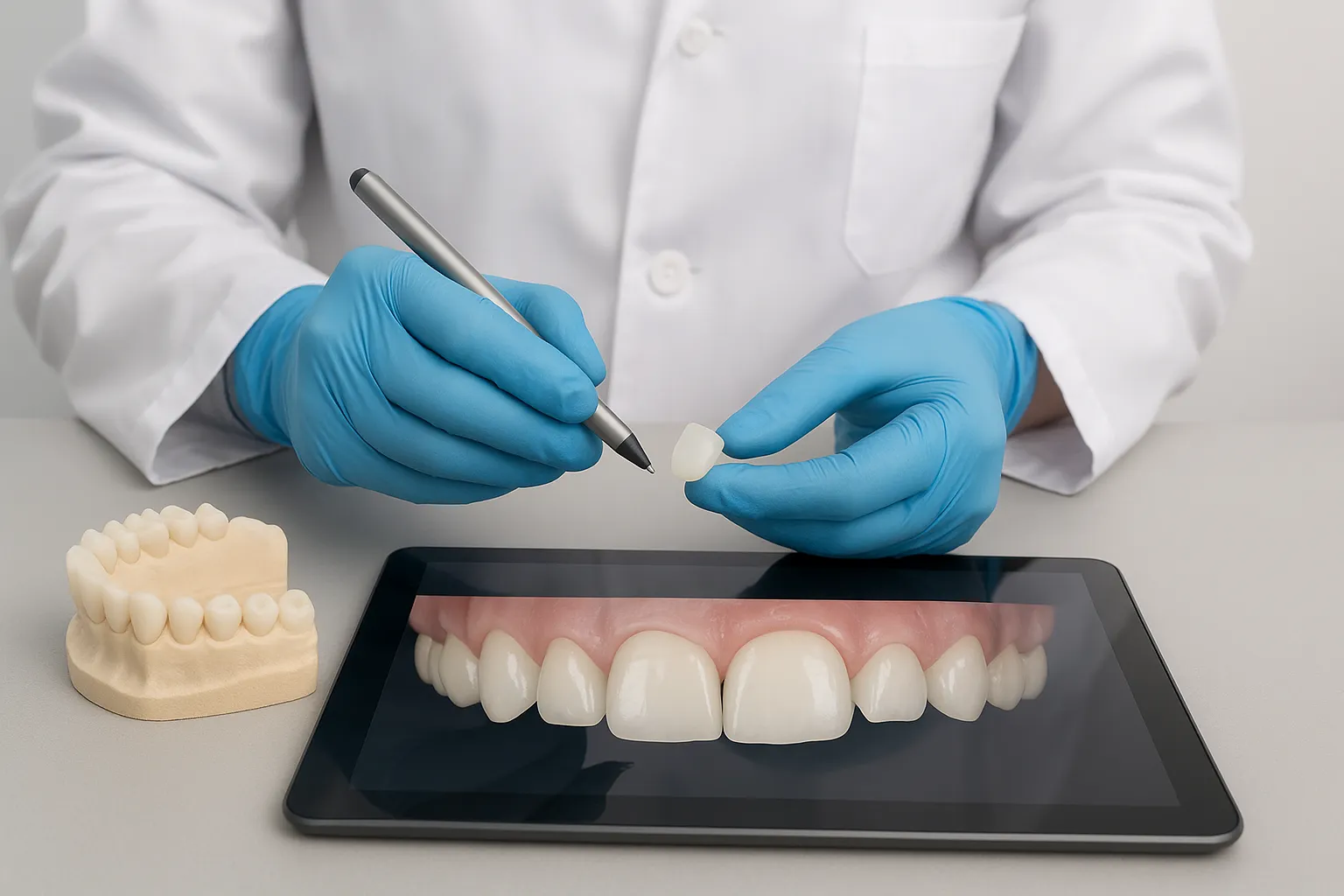In recent years, veneers have become a preferred solution for patients seeking aesthetic, durable, and minimally invasive restorations. As digital dentistry and CAD/CAM technology continue to advance, the materials used for veneers—especially ceramic and porcelain—have also evolved significantly.
As a dental materials manufacturer, HONCHON aims to help dental clinics and labs better understand the differences between ceramic and porcelain veneers, so they can choose the most suitable materials for each clinical case.

Veneers are thin, custom-designed restorations that are bonded to the front surface of teeth to enhance aesthetics, correct discolorations, or repair minor defects.
In the digital workflow, veneers are commonly designed with CAD software and fabricated using high-precision milling machines or 3D printing systems.
The choice of material—ceramic or porcelain—plays a decisive role in the outcome’s strength, translucency, and natural appearance.
Ceramic veneers are typically made from high-performance dental ceramics, known for their strength, durability, and adaptability.
Key advantages:
Excellent resistance to wear and staining
High flexural strength and stability during milling
Compatible with most open CAD/CAM systems
Cost-effective for labs and clinics
Ceramic veneers are suitable for patients who need a balance of aesthetics and function—especially for posterior or high-load restorations.
Porcelain veneers are often crafted from lithium disilicate glass ceramics, which provide superior translucency and lifelike aesthetics.
Key advantages:
Exceptional optical properties for natural shade matching
Ideal for anterior restorations
Smooth surface and high resistance to plaque accumulation
Long-lasting with proper bonding and polishing
Porcelain veneers are the preferred choice for anterior cosmetic cases where color, light transmission, and surface texture are essential for natural-looking results.

| Clinical Need | Recommended Material | Key Benefit |
|---|---|---|
| High-strength posterior restoration | Ceramic Veneer | Better mechanical performance |
| Front-tooth esthetic restoration | Porcelain Veneer | Superior translucency and color matching |
| Cost-sensitive cases | Ceramic Veneer | Affordable and durable |
| Complex esthetic cases | Porcelain Veneer | Highly customizable aesthetics |
Ultimately, material selection depends on patient expectations, clinical conditions, and the restoration’s location.
As a professional dental material manufacturer, HONCHON provides a full range of solutions for veneer production:
Zirconia and lithium disilicate blocks for veneers and crowns
CAD/CAM milling burs compatible with multiple systems
High-precision sintering furnaces for optimal translucency and strength
Customized OEM/ODM services for dental labs and distributors
Both ceramic and porcelain veneers play vital roles in modern aesthetic dentistry.
Ceramic veneers deliver durability and cost-effectiveness, while porcelain veneers achieve superior natural beauty.
By combining advanced materials with digital CAD/CAM systems, dental professionals can provide patients with restorations that are not only beautiful but also long-lasting.
At HONCHON, we are committed to supporting dental clinics and labs worldwide with high-quality materials, reliable equipment, and expert OEM services — helping every smile shine brighter.